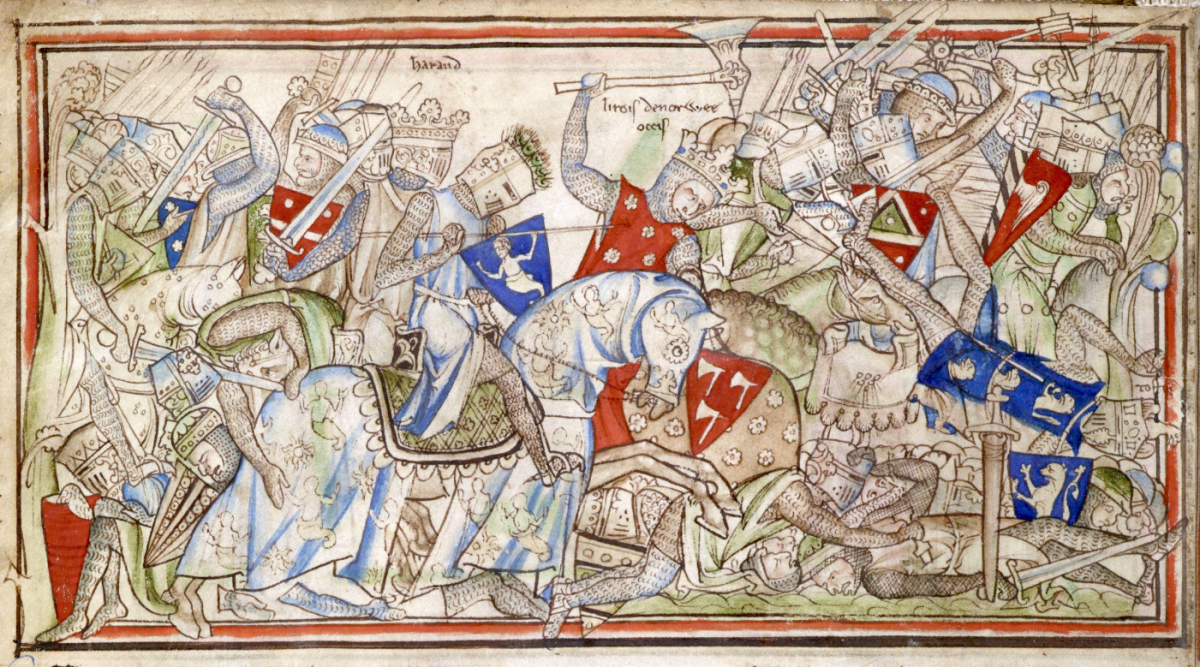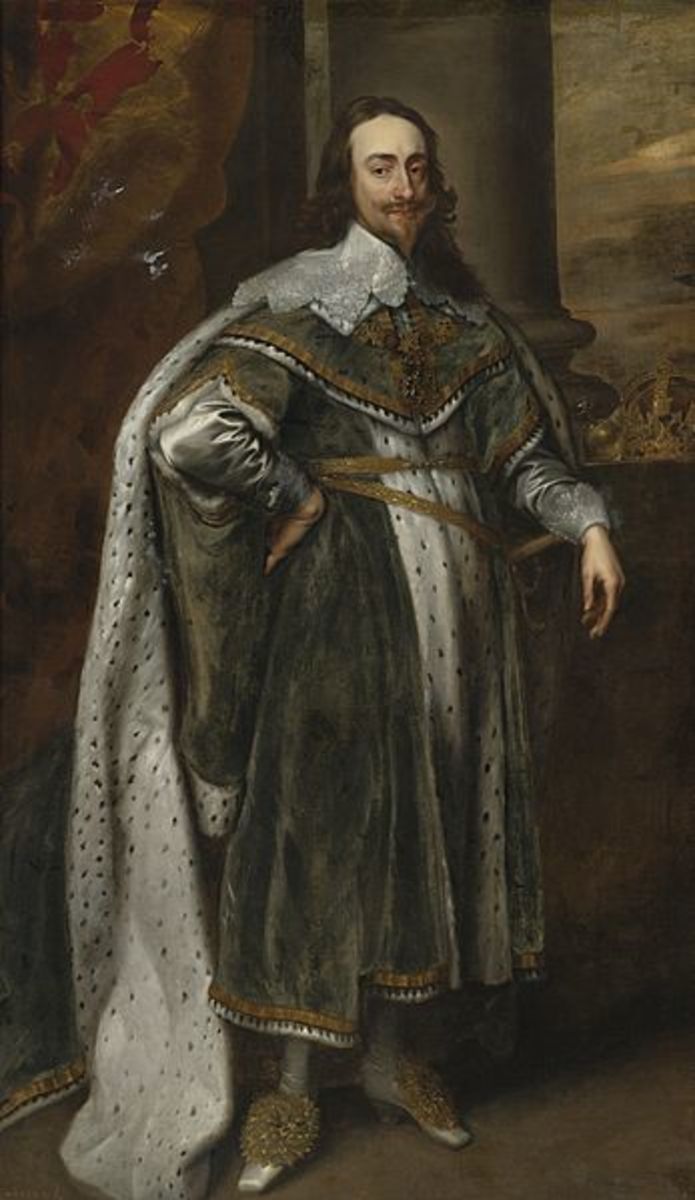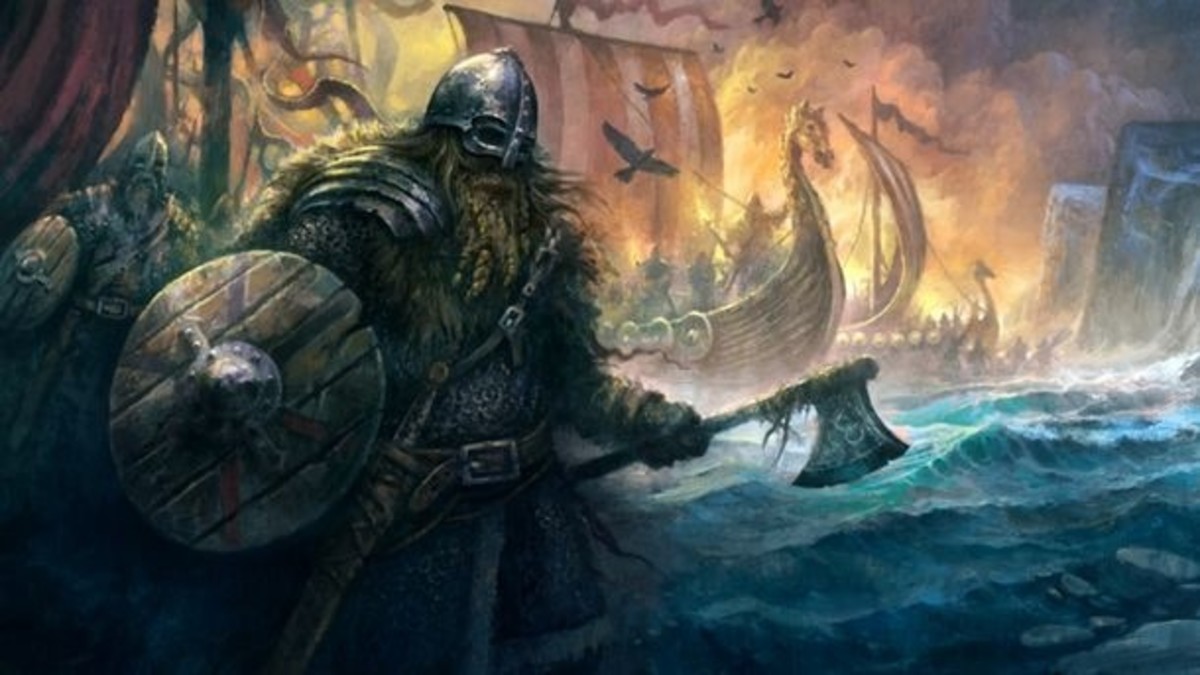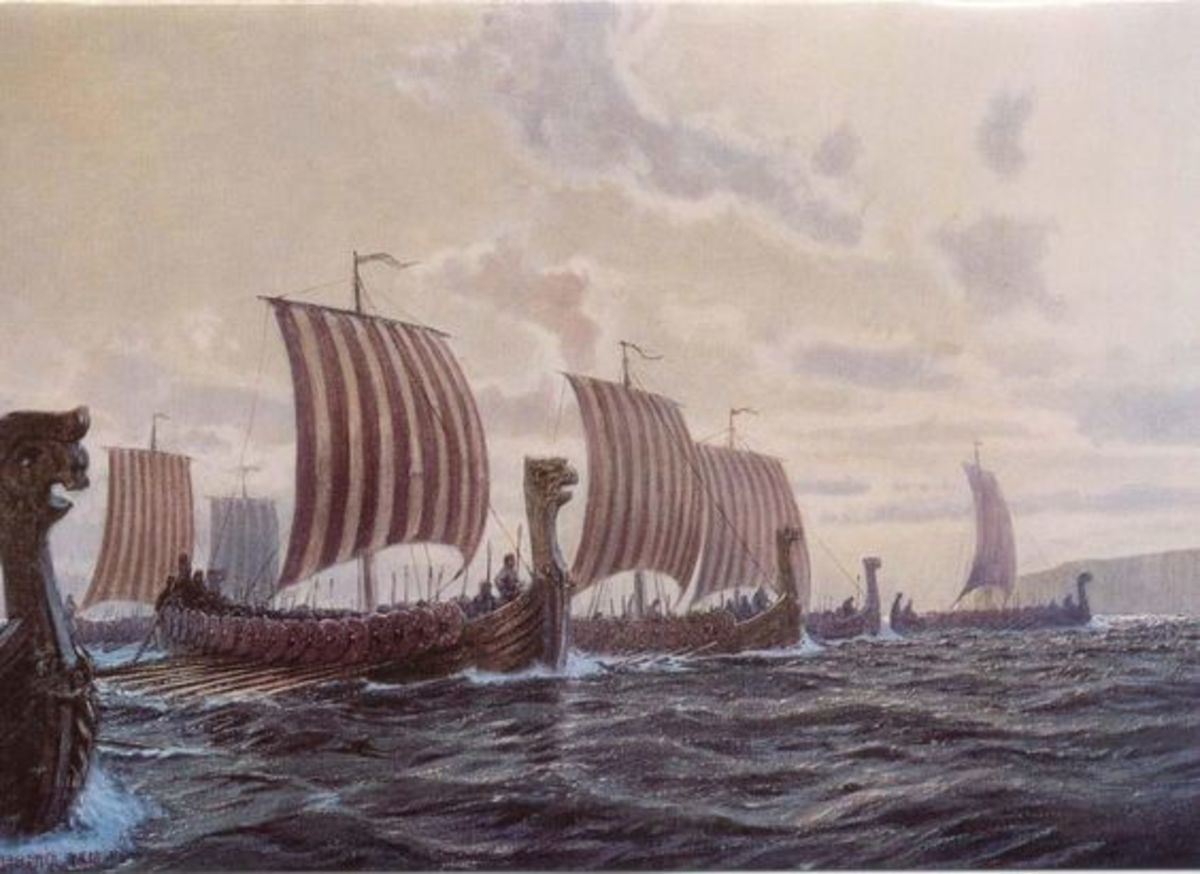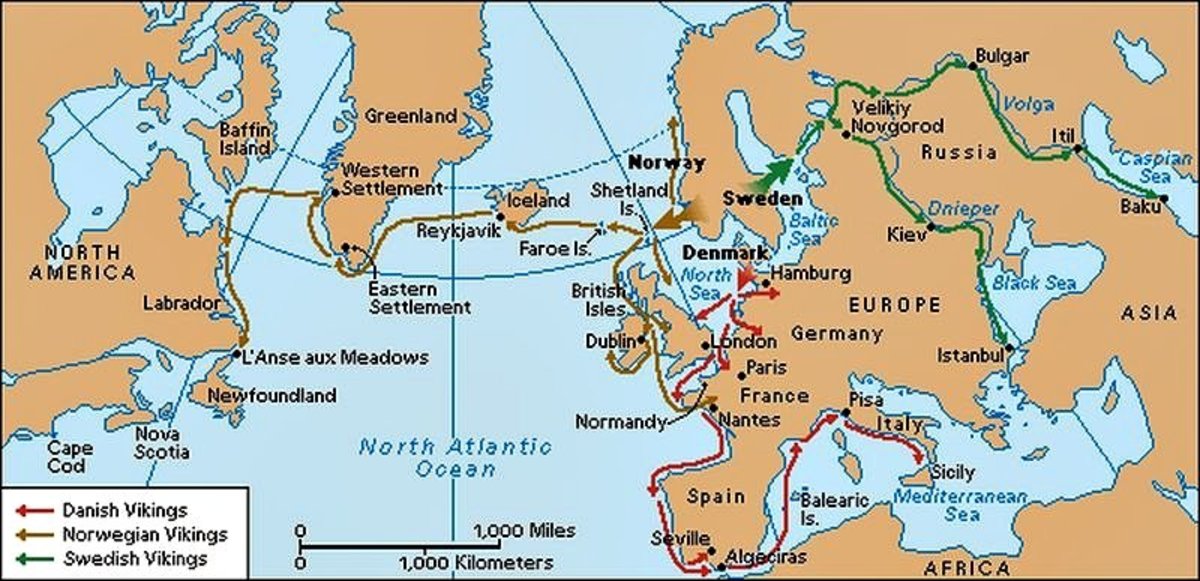- HubPages»
- Education and Science»
- History & Archaeology»
- History of Europe
A Dane Rules England (History in a Nutshell No.10)
Our last visit to England and its history saw Ethelred the Unready as King of England. However, we have seen that Ethelred was unfit to bear the burdens and responsibilities of kingship, and this extended even to the point of employing the murderous Dane Thurkill in his service. Thurkill and his warriors it may be recalled, had murdered the Archbishop of Canterbury, Alfheah, in a drunken frenzy. This however, did not deter Ethelred from using this brutal Dane's armed service, and no doubt he paid him handsomely.
Ethelred had also caused many Danes in his service to be executed, due to his mistrust of them, and had killed the sister of the Danish Viking, Sweyne, who as a result, had taken a bloody revenge on the country. Now, this same Sweyne arrived back in England once more, sailing up the river Humber to land near York. Most of the Danes that were already settled in the north of England joined his forces.
Sweyne left the Danish longships under the command of his son, Canute, (sometimes spelled Cnut) and then he marched his army south. Reaching London, Sweyne was resisted by Ethelred and his Danish comrade, Thurkill. Nonetheless, Sweyne destroyed Oxford and Winchester even though he was not able to enter the city of London. Sweyne however, was proclaimed king of England. The year was 1013 AD.
A Kingdom Overturned
Ethelred, it will be remembered, had formed a marriage contract with Emma, the sister of Richard, the Duke of Normandy. Ethelred now fled the country, going first to the Isle of Wight, then on to France to hide under the protection of the Duke.
However, the reign of King Sweyne was very short-lived, and he died in the year 1014. This made the English turn once again to Ethelred, and he was called back to take up the throne once more, with the proviso "that he would govern them better than he did before." Which says a great deal about how badly Ethelred had governed the country.
But all this meant nothing to the Danes in the north of England, who had already chosen Canute, Sweyne's son, as their successor king. So, for a time, England had two rulers vying for the crown.
However, Ethelred was now sick, and his son Prince Edmund, named Ironside, took charge of the military campaign whilst Canute plundered the Western parts of Wessex. Edmund was at first assisted by Edric, right-hand man to Ethelred, but Edric betrayed Edmund and joined forces with Canute.
Canute invaded the eastern parts of Mercia and headed straight for York. Ethelred now died, leaving the kingdom in the hands of his youthful son, Edmund, a young man of just 22 years old. The year was now 1016.
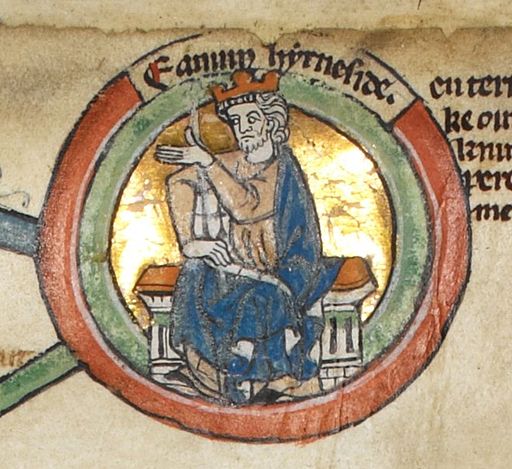
The Battle of Assingdune
Edmund Ironside, as young as he was, had fought against the Danes in four previous battles, and now, in the fifth battle, he faced Canute's Viking forces once again, this time in Essex. The place of this battle has various spellings, including Assandun and Ashingdon, but there is some dispute as to which part of Essex it was actually fought. The date was 18th October 1016.
The traitor Edric, had re-joined Edmund and had persuaded him that he would fight against Canute. Edmund, trusting this former advisor to his father Ethelred, had allowed Edric to take command of a large part of the English army.
But in a dreadful display of the utmost treachery, Edric held aloft a severed head of a thane (an English captain) whom he had murdered, who greatly resembled King Edmund, calling out to the English forces to flee and that their king was dead! He then cast down the Dragon banner, the flag of Wessex, and the English forces fled the field believing that all was lost. Canute won the day.
Canute chased Edmund and his retreating forces into Gloucestershire. When the two opposing forces met again, Edmund challenged Canute to fight against him in single combat, which was sometimes customary in the day and times of which we speak. Edmund was noted for his strength, build and courage, as young as he was, but Canute, being smaller and no match for him, declined the duel. Instead, Canute suggested that they should divide the kingdom between them.
In the end, Wessex, Essex, East Anglia and London came under Edmund's rule, and the northern territories etc that were under the Danelaw, were granted to Canute under the ultimate authority of Edmund and Wessex. However, Edmund, brave and strong leader that he was, did not live long. It has been suggested that the deceitful Edric was likely to have had him murdered. This meant that Canute inherited the entire realm, becoming King of all England.
King Canute
Under the reign of Canute, the lineage of Edmund was prohibited from the line of succession to the English throne. His two young sons were sent off to Sweden where they were eventually placed in the care of the King of Hungary.
Canute made the murderous Thurkill the Dane ruler over East Anglia. What happened to the duplicitous Edric? His greed knew no bounds, and he pressed upon Canute that he deserved greater rewards for his part in the defeat of King Edmund. Canute had already given Edric the Kingdom of Mercia, but it wasn't enough; Edric demanded more. It was enough to arouse Canute's disgust and anger at the traitor, and the Dane Eric of Northumbria hewed Edric down on the spot with his axe. Edric's head was placed on a spike in London as a dire warning to others that they would pay for their evil ways.
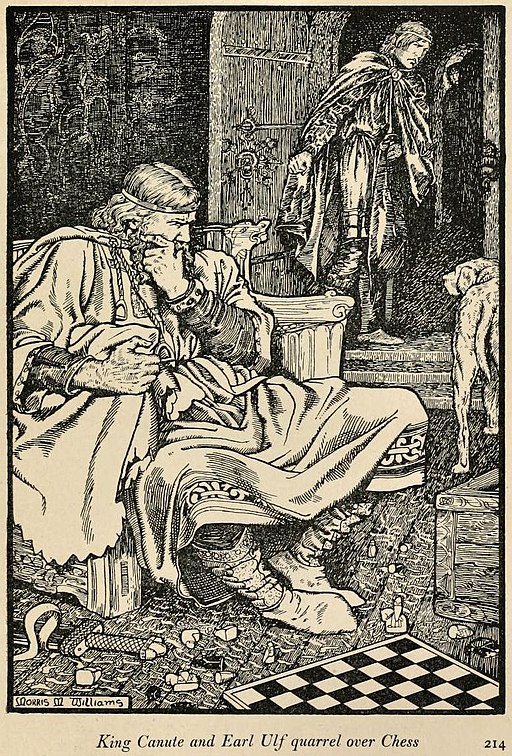
But the door on the lineage of Ethelred the Unready was not closed tightly. He had two sons by Emma of Normandy, named Edward and Alfred, and Canute knew that he might have trouble from them at some point or another. Duke Robert of Normandy sent his ambassadors to Canute to try and bargain for the return of the Kingdom of England to Ethelred's line, and hence to Normandy. Canute gave nothing to them.
Instead, Canute married Emma, Ethelred's Norman widow, even though he already had a wife, whom he packed off to Norway. But he did not allow Emma or her sons to live in England, lest they try and usurp the throne. They therefore remained in Normandy. This was the real beginning of the Norman claim on the English crown.
Meanwhile, King Canute expanded his kingdom, including not only England, but also Norway, Sweden and Slavonia. Canute took up Christianity and all that went along with Roman Catholicism. We do not know how much of this display was genuine religious zeal or showmanship to keep the English people pacified. If the people were unhappy with this new arrangement, there was little that they could do about it save for minor resistance. The English people were now completely subject to Danish rule for the first time in their history.
Historical Sources:
History of the Anglo-Saxons by Sir Francis Palgrave
This Sceptred Isle by Christopher Lee for the BBC Radio Collection
© 2019 S P Austen

